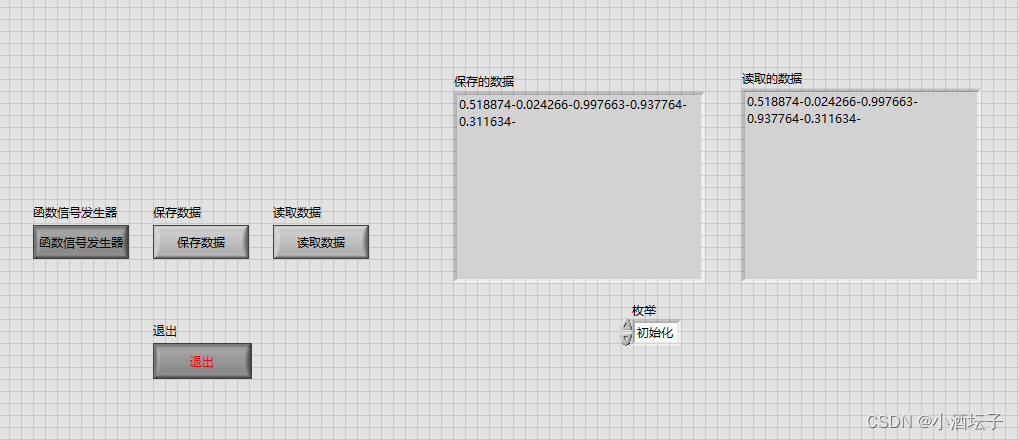【OpenCV图像读取与保存宝典】:从入门到精通
发布时间: 2024-08-06 17:16:57 阅读量: 7 订阅数: 26 


# 1. OpenCV图像读取与保存概述**
OpenCV(Open Source Computer Vision Library)是一个功能强大的开源计算机视觉库,广泛用于图像处理、计算机视觉和机器学习等领域。图像读取和保存是OpenCV中的基本操作,本文将深入探讨OpenCV的图像读取和保存技术,包括支持的图像格式、读取和保存函数,以及优化和高级应用。
# 2. 图像读取技术**
**2.1 图像文件格式与OpenCV支持**
OpenCV支持广泛的图像文件格式,包括:
| 格式 | 扩展名 | OpenCV支持 |
|---|---|---|
| JPEG | .jpg, .jpeg | 是 |
| PNG | .png | 是 |
| BMP | .bmp | 是 |
| TIFF | .tif, .tiff | 是 |
| RAW | .raw | 是 |
| WebP | .webp | 是 |
| HEIC | .heic | 是 |
**2.2 OpenCV图像读取函数详解**
OpenCV提供了多种函数用于读取图像,包括:
**2.2.1 imread()函数**
`imread()`函数是读取图像最常用的函数。它支持多种图像文件格式,并返回一个包含图像数据的NumPy数组。
**代码块:**
```python
import cv2
# 读取图像
image = cv2.imread('image.jpg')
```
**逻辑分析:**
* `cv2.imread()`函数读取名为`image.jpg`的图像文件。
* `image`变量是一个NumPy数组,包含图像的像素值。
**参数说明:**
* `filename`:图像文件路径。
* `flags`:指定图像读取模式的标志,例如`cv2.IMREAD_COLOR`(彩色图像)或`cv2.IMREAD_GRAYSCALE`(灰度图像)。
**2.2.2 imdecode()函数**
`imdecode()`函数用于从二进制数据中解码图像。它通常用于从网络或文件流中读取图像。
**代码块:**
```python
import cv2
import base64
# 从base64编码的字符串解码图像
image_data = base64.b64decode('...')
image = cv2.imdecode(image_data, cv2.IMREAD_COLOR)
```
**逻辑分析:**
* `base64.b64decode()`函数将base64编码的字符串解码为二进制数据。
* `cv2.imdecode()`函数从二进制数据中解码图像。
**参数说明:**
* `buf`:包含图像二进制数据的NumPy数组。
* `flags`:指定图像读取模式的标志。
**2.2.3 VideoCapture类**
`VideoCapture`类用于从视频文件中读取帧。它提供了一个接口,用于控制视频播放和帧提取。
**代码块:**
```python
import cv2
# 打开视频文件
cap = cv2.VideoCapture('video.mp4')
# 逐帧读取视频
while cap.isOpened():
ret, frame = cap.read()
if not ret:
break
# 处理帧
...
# 释放视频捕获器
cap.release()
```
**逻辑分析:**
* `cv2.VideoCapture()`函数打开视频文件。
* `cap.isOpened()`检查视频捕获器是否已打开。
* `cap.read()`函数读取视频的下一帧。
* `ret`是一个布尔值,指示是否成功读取帧。
* `frame`是一个包含帧数据的NumPy数组。
**参数说明:**
* `filename`:视频文件路径。
* `apiPreference`:指定首选的视频捕获API(例如`cv2.CAP_DSHOW`或`cv2.CAP_V4L2`)。
# 3. 图像保存技术
### 3.1 图像文件格式与OpenCV支持
OpenCV支持广泛的图像文件格式,包括:
| 格式 | 扩展名 | 描述 |
|---|---|---|
| JPEG | .jpg, .jpeg | 有损压缩格式,适用于照片和图像 |
| PNG | .png | 无损压缩格式,适用于带有透明度的图像 |
| TIFF | .tiff, .tif | 无损格式,适用于高品质图像 |
| BMP | .bmp | 未压缩格式,适用于简单图像 |
| RAW | .raw, .dng | 原始图像格式,包含未经处理的传感器数据 |
### 3.2 OpenCV图像保存函数详解
OpenCV提供了多种图像保存函数,包括:
#### 3.2.1 imwrite()函数
`imwrite()`函数用于将图像保存到指定的文件中。其语法如下:
```cpp
bool imwrite(const string& filename, InputArray img, const vector<int>& params = vector<int>())
```
| 参数 | 描述 |
|---|---|
| `filename` | 输出图像文件的名称 |
| `img` | 要保存的图像 |
| `params` | 可选参数,用于指定图像编码和质量 |
#### 3.2.2 imdecode()函数
`imdecode()`函数用于将图像数据解码并保存到文件中。其语法如下:
```cpp
Mat imdecode(InputArray buf, int flags)
```
| 参数 | 描述 |
|---|---|
| `buf` | 图像数据 |
| `flags` | 解码标志,指定图像格式和编码 |
#### 3.2.3 VideoWriter类
`VideoWriter`类用于保存视频文件。其语法如下:
```cpp
VideoWriter(const string& filename, int fourcc, double fps, Size frameSize, bool isColor=true)
```
| 参数 | 描述 |
|---|---|
| `filename` | 输出视频文件的名称 |
| `fourcc` | 视频编解码器 |
| `fps` | 视频帧率 |
| `frameSize` | 视频帧大小 |
| `isColor` | 是否保存彩色视频 |
### 3.2.4 代码示例
以下代码示例展示了如何使用`imwrite()`函数保存图像:
```cpp
#include <opencv2/opencv.hpp>
int main() {
// 读取图像
Mat img = imread("input.jpg");
// 保存图像
bool success = imwrite("output.jpg", img);
if (success) {
std::cout << "图像保存成功!" << std::endl;
} else {
std::cout << "图像保存失败!" << std::endl;
}
return 0;
}
```
### 3.2.5 代码逻辑分析
该代码首先使用`imread()`函数读取图像,然后使用`imwrite()`函数将图像保存到文件中。`imwrite()`函数返回一个布尔值,表示保存是否成功。
# 4. 图像读取与保存实践**
### 4.1 读取和显示图像
**代码块 4.1:读取图像**
```python
import cv2
# 读取图像
image = cv2.imread('image.jpg')
# 显示图像
cv2.imshow('Image', image)
cv2.waitKey(0)
cv2.destroyAllWindows()
```
**逻辑分析:**
* `cv2.imread()` 函数用于读取图像。它接受图像文件路径作为参数,并返回一个包含图像数据的 NumPy 数组。
* `cv2.imshow()` 函数用于显示图像。它接受图像数组和窗口名称作为参数。
* `cv2.waitKey()` 函数等待用户按下键盘上的任意键。
* `cv2.destroyAllWindows()` 函数关闭所有打开的窗口。
**参数说明:**
* `filename`: 要读取的图像文件的路径。
* `flags`: 指定图像读取标志。默认值为 `cv2.IMREAD_COLOR`,表示读取彩色图像。
* `window_name`: 要显示图像的窗口名称。
### 4.2 保存图像
**代码块 4.2:保存图像**
```python
import cv2
# 读取图像
image = cv2.imread('image.jpg')
# 保存图像
cv2.imwrite('saved_image.jpg', image)
```
**逻辑分析:**
* `cv2.imwrite()` 函数用于保存图像。它接受图像数组和图像文件路径作为参数。
* 图像文件路径可以指定图像的格式,例如 `.jpg`、`.png` 或 `.bmp`。
**参数说明:**
* `filename`: 要保存的图像文件的路径。
* `image`: 要保存的图像数组。
### 4.3 读取和保存视频
**代码块 4.3:读取和保存视频**
```python
import cv2
# 读取视频
cap = cv2.VideoCapture('video.mp4')
# 逐帧读取视频
while True:
ret, frame = cap.read()
if not ret:
break
# 显示帧
cv2.imshow('Frame', frame)
# 保存帧
cv2.imwrite('frame_{}.jpg'.format(cap.get(cv2.CAP_PROP_POS_FRAMES)), frame)
# 按下 'q' 退出
if cv2.waitKey(1) & 0xFF == ord('q'):
break
# 释放视频捕获对象
cap.release()
# 关闭所有窗口
cv2.destroyAllWindows()
```
**逻辑分析:**
* `cv2.VideoCapture()` 函数用于读取视频。它接受视频文件路径作为参数,并返回一个视频捕获对象。
* `cap.read()` 方法逐帧读取视频。它返回一个布尔值 `ret`,表示是否成功读取帧,以及一个包含帧数据的 NumPy 数组 `frame`。
* `cv2.imshow()` 函数用于显示帧。
* `cv2.imwrite()` 函数用于保存帧。
* `cv2.CAP_PROP_POS_FRAMES` 属性获取视频中当前帧的索引。
* `cv2.waitKey()` 函数等待用户按下键盘上的任意键。
* `cap.release()` 方法释放视频捕获对象。
* `cv2.destroyAllWindows()` 函数关闭所有打开的窗口。
**参数说明:**
* `filename`: 要读取的视频文件的路径。
* `frame`: 要保存的帧的 NumPy 数组。
# 5. 图像读取与保存优化
图像读取和保存是计算机视觉中至关重要的操作,其效率和性能对应用程序的整体性能有重大影响。本节将探讨图像读取和保存的优化技术,以提高应用程序的效率和响应能力。
### 5.1 图像读取优化
**1. 批量读取图像**
对于需要处理大量图像的应用程序,批量读取图像可以显著提高效率。OpenCV提供了`glob()`函数,可以一次性读取指定目录下的所有图像文件。
```python
import cv2
import glob
# 批量读取图像
images = [cv2.imread(file) for file in glob.glob("path/to/directory/*.jpg")]
```
**2. 使用多线程或多进程**
如果图像读取操作非常耗时,可以使用多线程或多进程来并行读取图像。这可以充分利用多核处理器的优势,显著提高读取速度。
```python
import cv2
import multiprocessing
def read_image(file):
return cv2.imread(file)
# 使用多进程读取图像
pool = multiprocessing.Pool(processes=4)
images = pool.map(read_image, glob.glob("path/to/directory/*.jpg"))
```
**3. 调整图像大小**
在读取图像时,可以指定目标图像大小。这可以减少图像大小,从而减少读取时间和内存消耗。
```python
# 读取图像并调整大小
image = cv2.imread("path/to/image.jpg", cv2.IMREAD_COLOR)
image = cv2.resize(image, (256, 256))
```
### 5.2 图像保存优化
**1. 选择合适的图像格式**
不同的图像格式具有不同的压缩率和文件大小。选择合适的图像格式可以优化保存空间和读取速度。
| 格式 | 压缩率 | 文件大小 |
|---|---|---|
| JPEG | 高 | 小 |
| PNG | 无损 | 大 |
| TIFF | 无损 | 非常大 |
**2. 调整图像质量**
对于JPEG格式图像,可以通过调整质量参数来控制压缩率和文件大小。质量参数范围为0-100,值越低,压缩率越高,文件大小越小,但图像质量也会下降。
```python
# 保存图像并调整质量
cv2.imwrite("path/to/image.jpg", image, [int(cv2.IMWRITE_JPEG_QUALITY), 90])
```
**3. 使用图像金字塔**
图像金字塔是一种将图像表示为一系列不同分辨率的图像结构。在保存图像时,可以只保存图像金字塔中的部分层级,从而减少文件大小。
```python
# 使用图像金字塔保存图像
image_pyramid = cv2.buildPyramid(image, (2, 2))
cv2.imwrite("path/to/image.jpg", image_pyramid[0])
```
# 6. 图像读取与保存高级应用**
### 6.1 图像流处理
图像流处理是指对图像数据进行实时处理,而无需将其全部加载到内存中。这对于处理大型图像或视频流非常有用。OpenCV提供了VideoCapture类来实现图像流处理。
```python
import cv2
# 打开视频流
cap = cv2.VideoCapture('video.mp4')
# 循环读取视频帧
while True:
# 读取下一帧
ret, frame = cap.read()
# 如果帧读取成功
if ret:
# 对帧进行处理
...
# 如果帧读取失败,退出循环
else:
break
# 释放视频流
cap.release()
```
### 6.2 图像压缩与解压缩
图像压缩是将图像数据大小减少的过程,以便于存储和传输。OpenCV提供了多种图像压缩算法,包括JPEG、PNG和WebP。
```python
import cv2
# 读取图像
image = cv2.imread('image.jpg')
# 压缩图像
compressed_image = cv2.imwrite('compressed.jpg', image, [cv2.IMWRITE_JPEG_QUALITY, 90])
# 解压缩图像
decompressed_image = cv2.imread('compressed.jpg')
```
### 6.3 图像格式转换
图像格式转换是指将图像从一种格式转换为另一种格式。OpenCV提供了多种图像格式转换函数,包括cv2.cvtColor()和cv2.imdecode()。
```python
import cv2
# 读取图像
image = cv2.imread('image.jpg')
# 转换为灰度图像
gray_image = cv2.cvtColor(image, cv2.COLOR_BGR2GRAY)
# 转换为HSV图像
hsv_image = cv2.cvtColor(image, cv2.COLOR_BGR2HSV)
```
0
0





